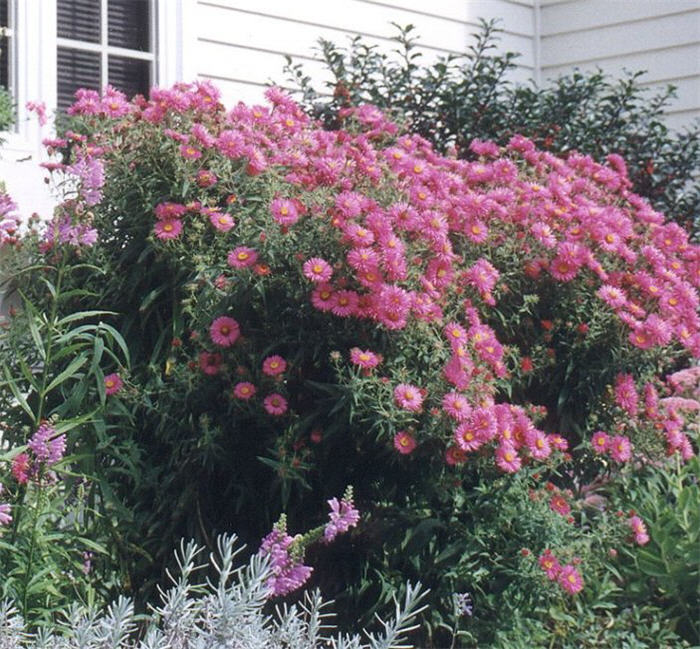| Botanical Name: Aster novi-belgii 'Alma Potschke' | |
| Common Name: Alma Potschke Aster |

-
Anatomy
-
Culture
-
Design
Plant Type
Perennial
Height Range
3-6'
Flower Color
Pink
Flower Season
Summer, Fall
Leaf Color
Dark Green
Bark Color
n/a
Fruit Color
n/a
Fruit Season
n/a
Sun
Full
Water
Medium, Extra in Summer
Growth Rate
Moderate
Soil Type
Sandy, Clay, Loam, Rocky, Unparticular
Soil Condition
Average, Rich, Poor, Well-drained, Dry
Soil pH
Neutral
Adverse Factors
Attracts Bees
Design Styles
English Cottage, Meadow, Ranch
Accenting Features
Fall Color, Showy Flowers
Seasonal Interest
Summer, Fall
Location Uses
Background, Perennial Border, Shrub Border, Foundation, Patio, Walls / Fences
Special Uses
Cut Flowers, Mass Planting
Attracts Wildlife
Butterflies
Information by: Stephanie Duer
Photographer: Bobbie Schwartz
Photographer: Bobbie Schwartz
-
Description
-
Notes
'Alma Potschke' is another aster hybrid that blooms late summer into fall, with quarter-sized, bright rosy-pink daisy-like flowers; a great contrast to the typical russets and muted oranges of fall. This is a large aster, growing 3 to 4 feet tall and wide, so give it the room it will need. Use in a perennial border, shrub or foundation border, and with ornamental grasses.
Grow in average, medium to dry, well-drained soils in full sun to part shade. Pinching back stems in late spring will lower overall plant height, but will also delay bloom onset and increase branches, increasing the number of blooms. A light winter mulch will help protect crowns. Cut stems to the ground in early spring before new growth appears. Wet soils in winter can be fatal.